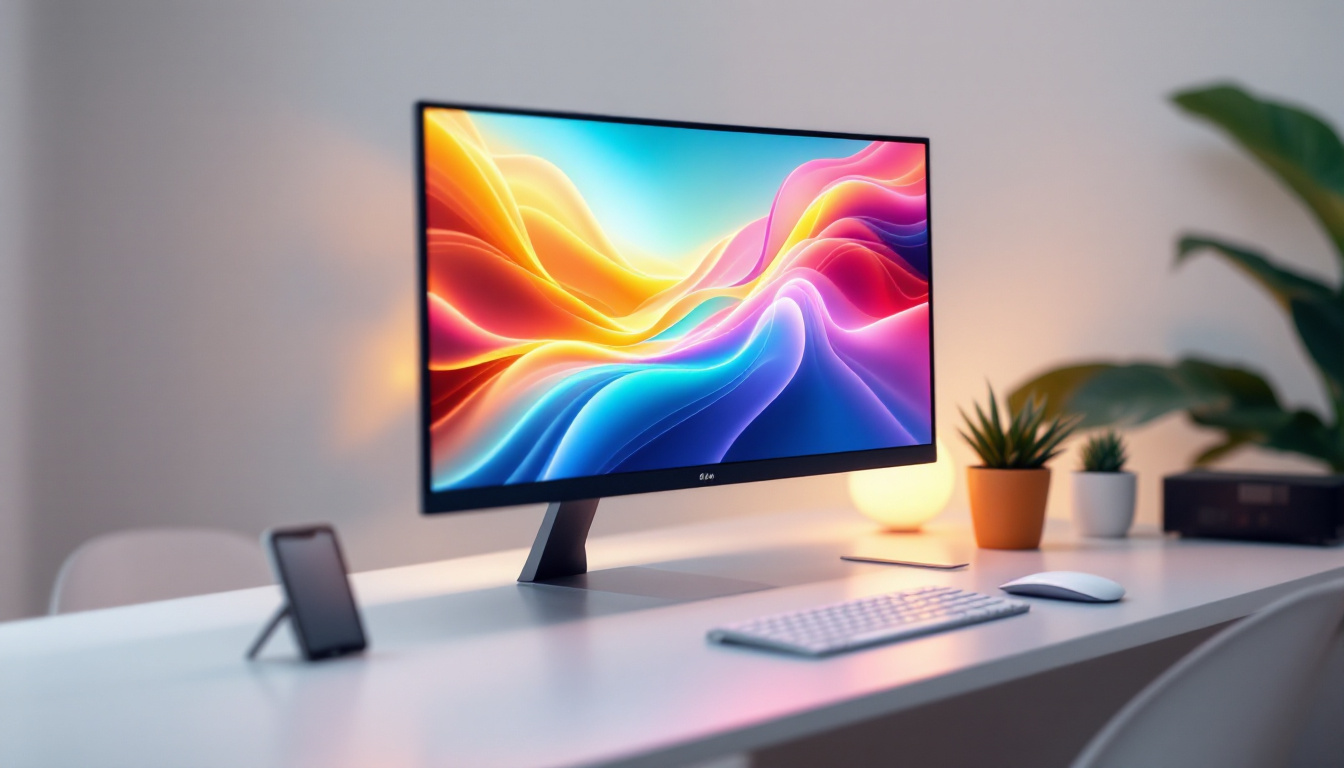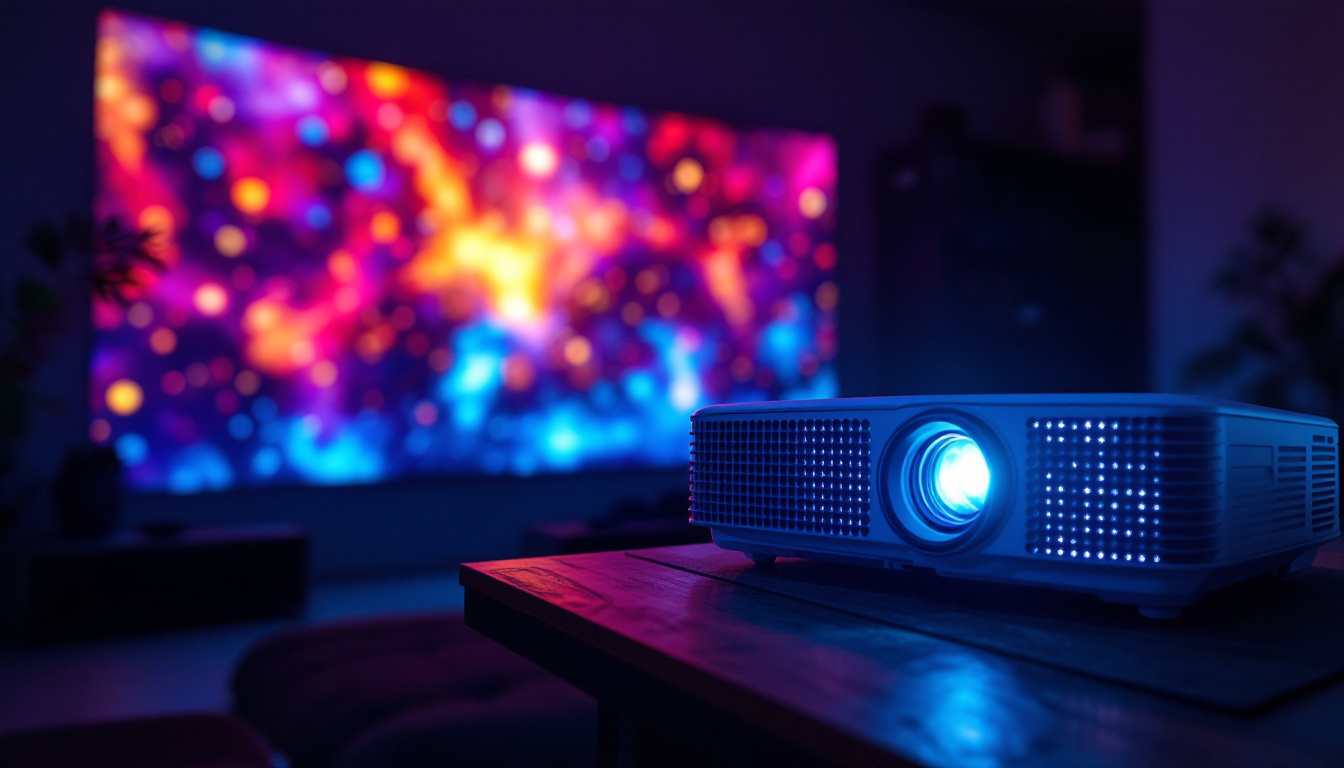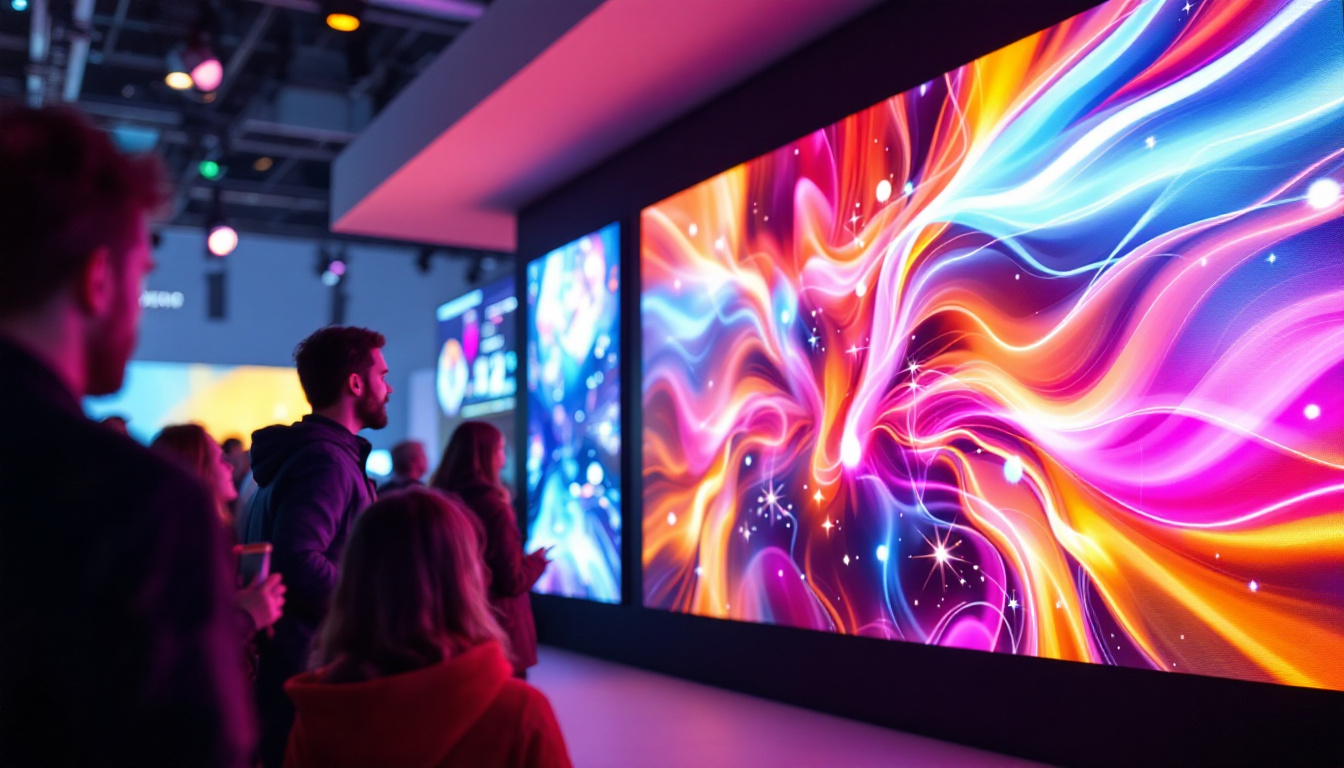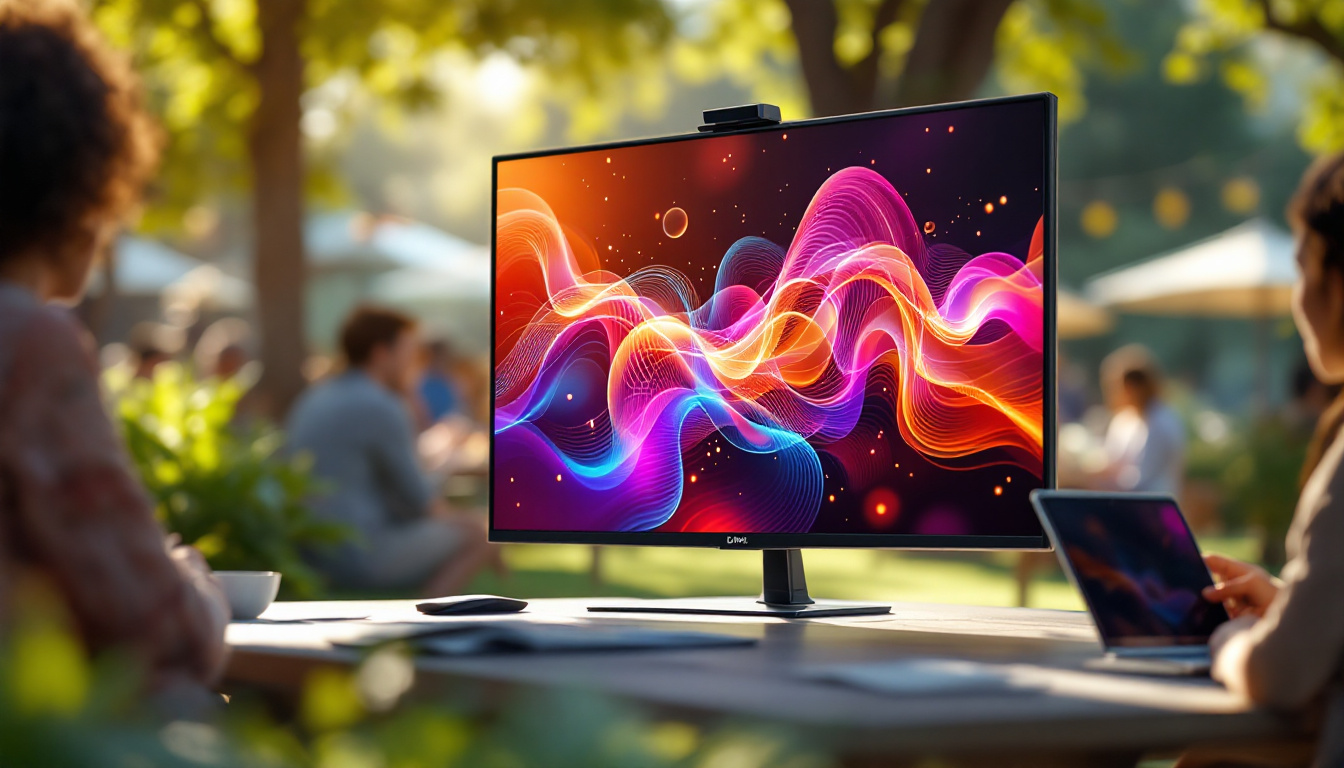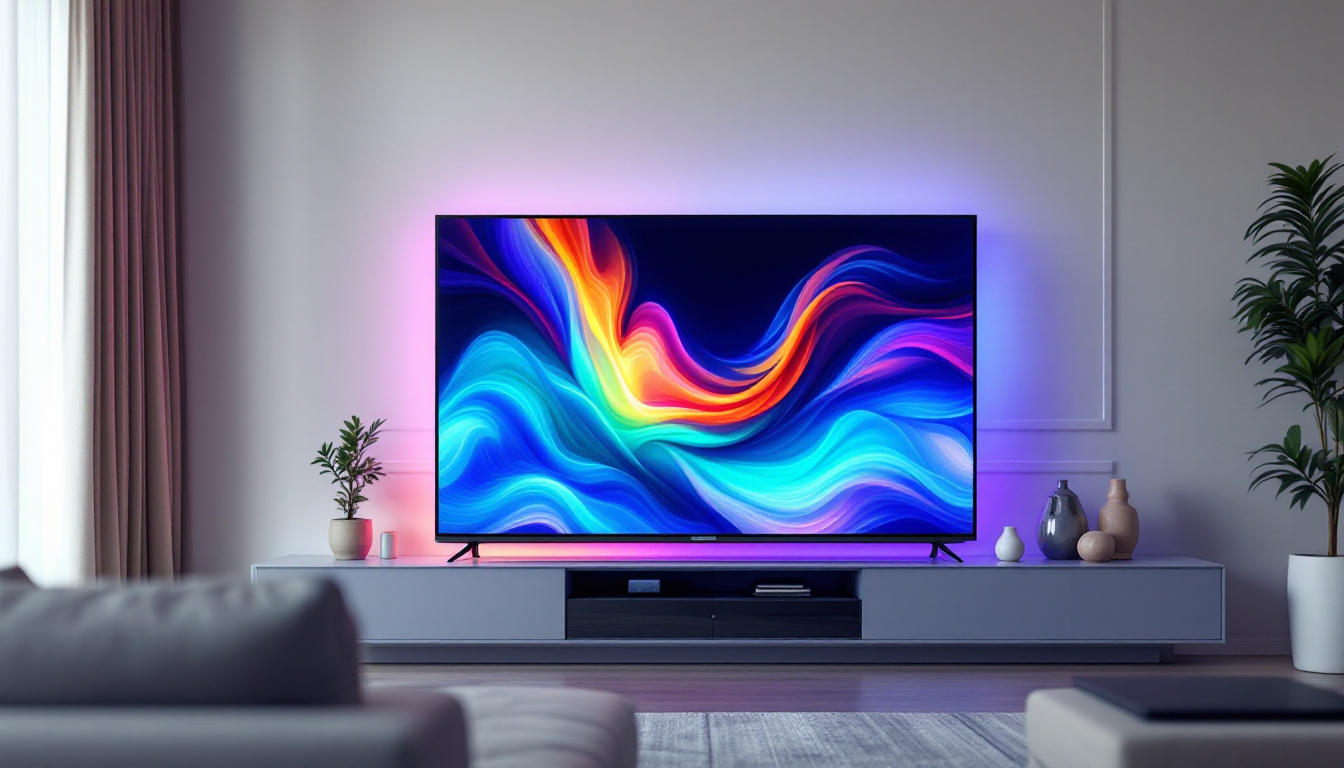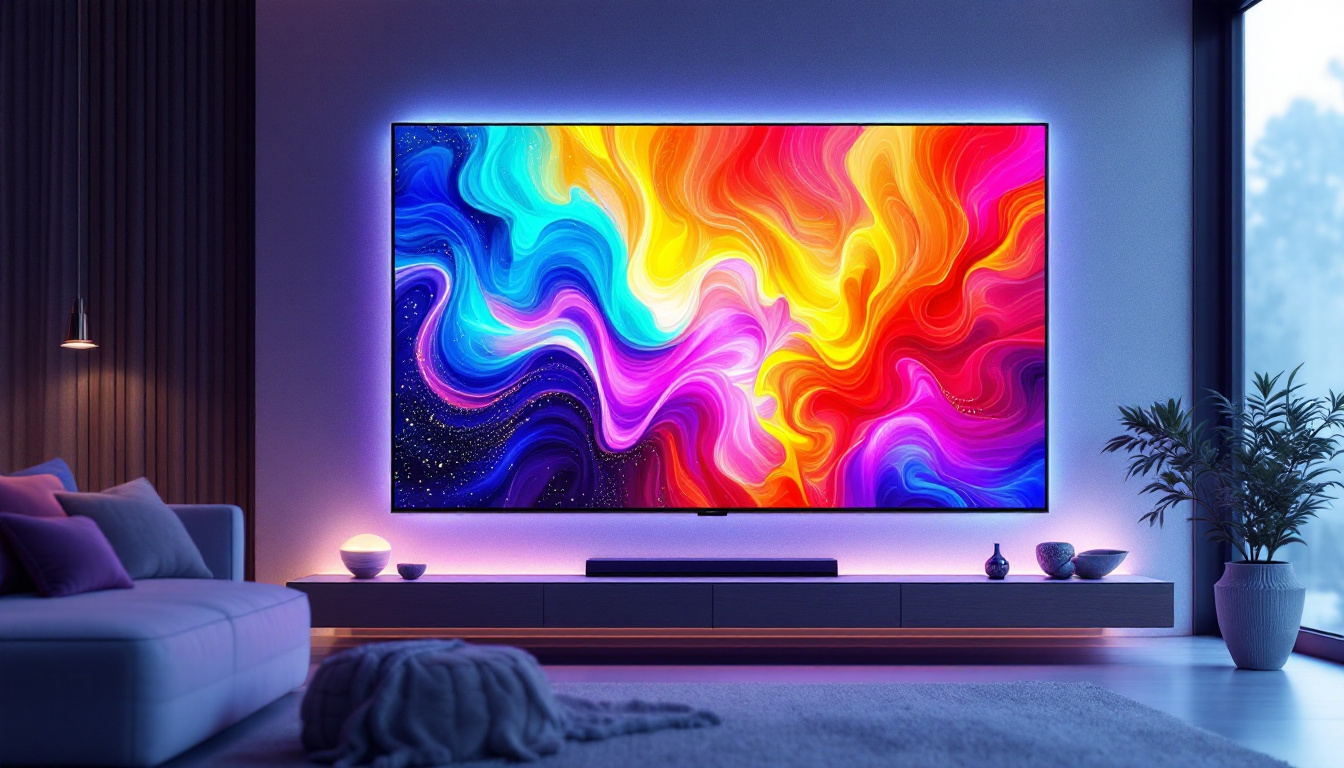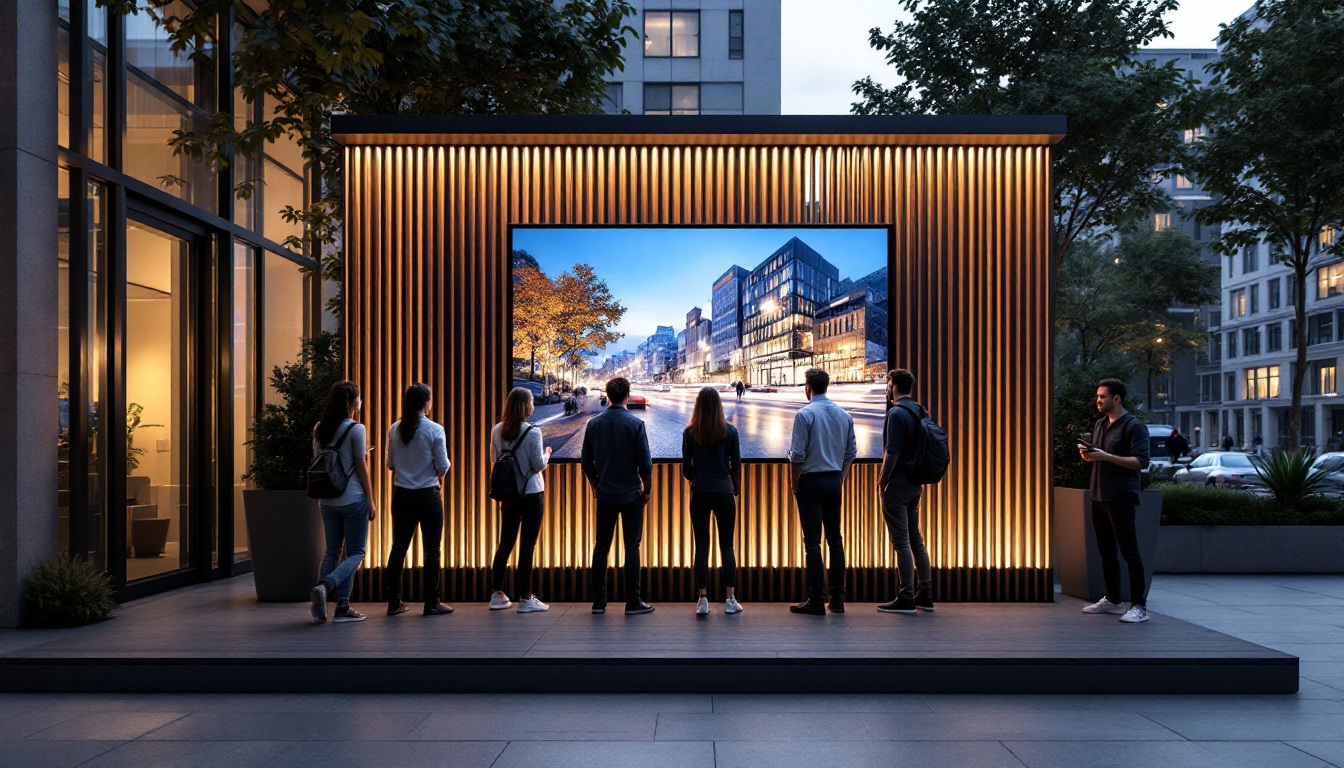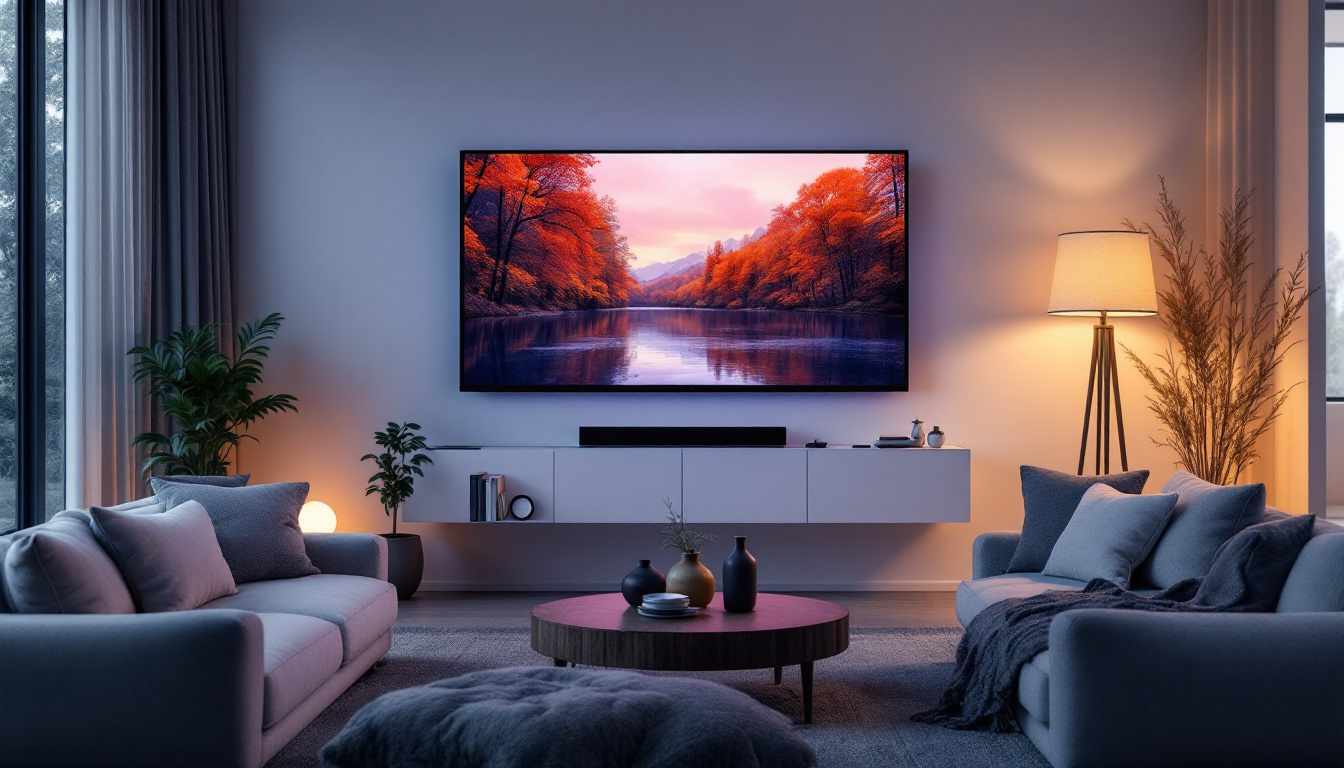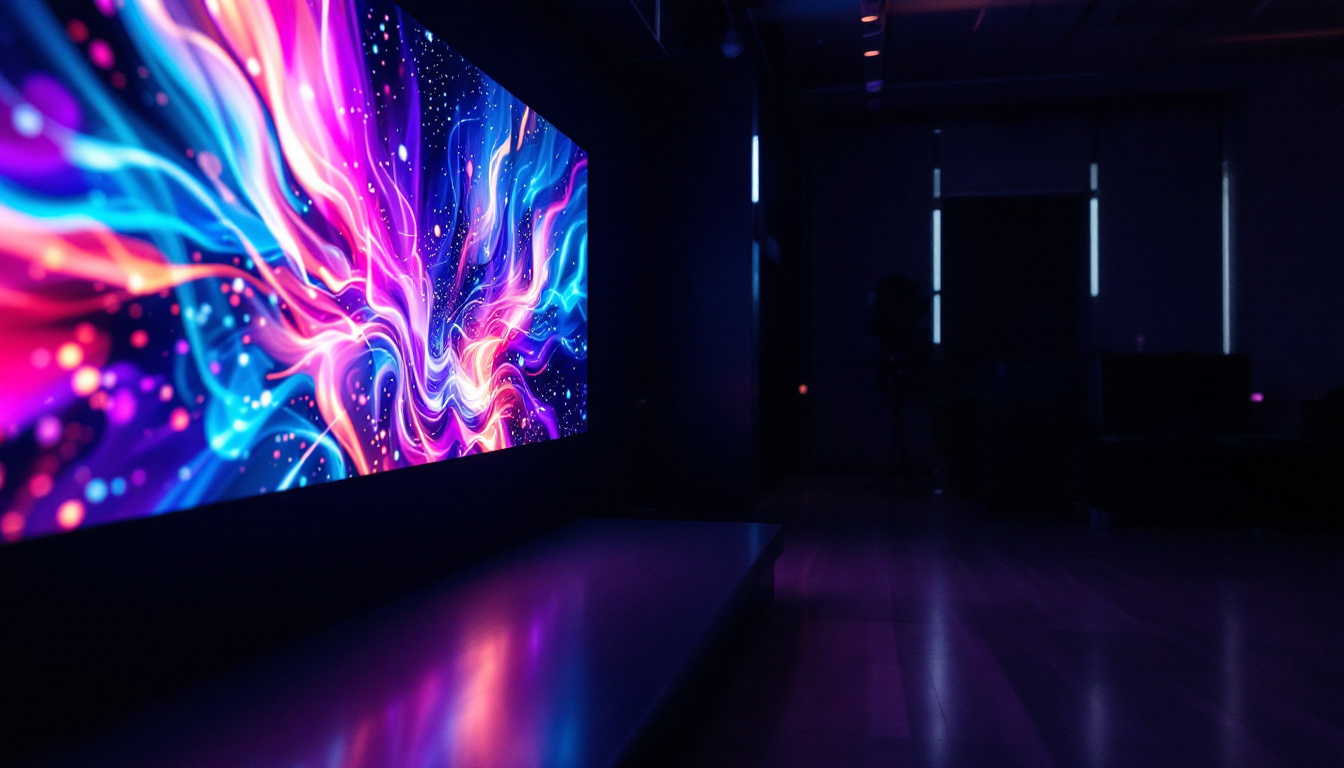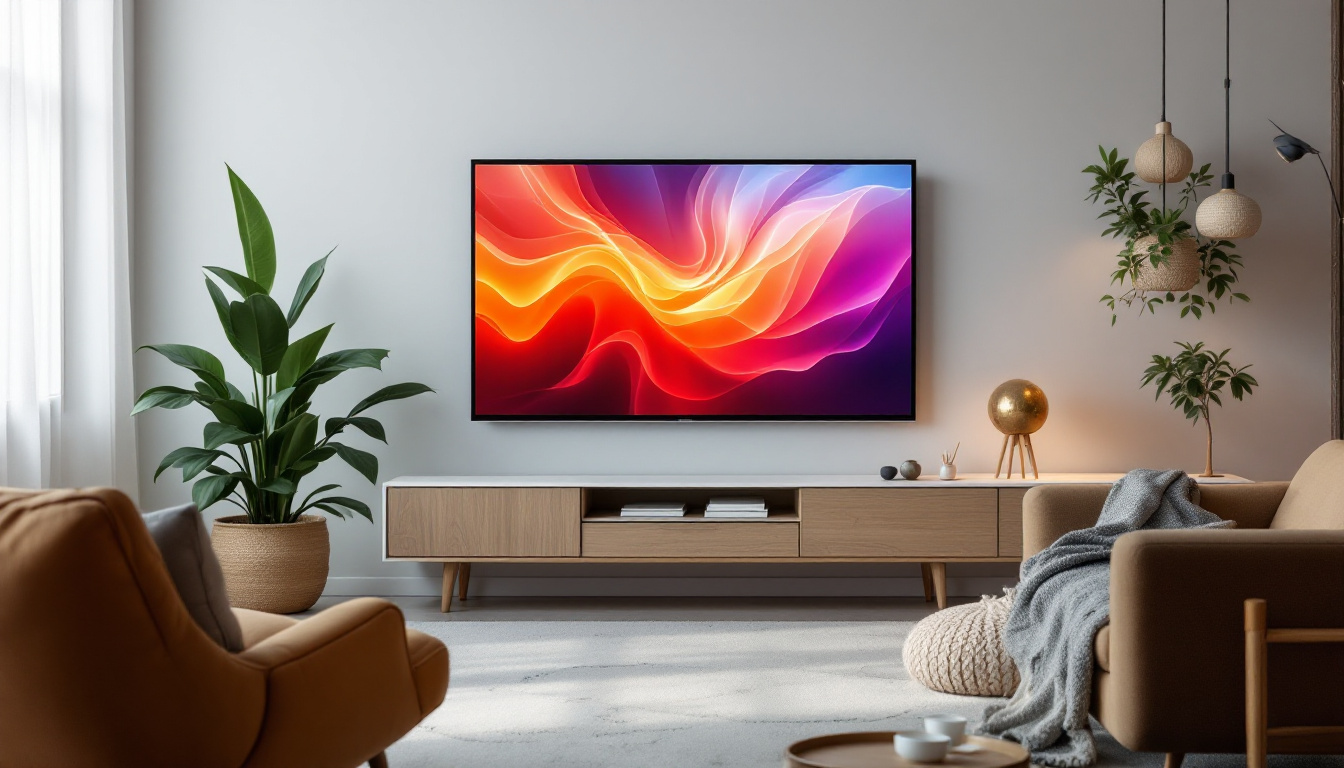In today’s fast-paced digital world, the demand for sleek and efficient technology is ever-increasing. One of the most significant advancements in display technology is the slim desktop monitor, particularly those utilizing LED (Light Emitting Diode) technology. This article delves into the intricacies of slim desktop monitors, exploring their benefits, features, and the technology behind LED displays.
Understanding LED Technology
LED technology has revolutionized the way we perceive visual content on screens. Unlike traditional LCD monitors that rely on fluorescent backlighting, LED monitors utilize tiny light-emitting diodes to produce images. This fundamental difference not only enhances the quality of the display but also contributes to the monitor’s slim profile. The compact nature of LEDs allows manufacturers to create thinner and lighter devices, which has become increasingly important in our mobile-centric world where portability is key.
How LED Works
At its core, LED technology operates by passing an electric current through a semiconductor material, which then emits light. This process allows for greater energy efficiency and a wider color gamut compared to older technologies. The use of LEDs in monitors can be categorized into two main types: edge-lit and backlit. Edge-lit displays have LEDs positioned around the screen’s perimeter, while backlit displays feature LEDs behind the entire screen surface. The latter often provides a more uniform light distribution, enhancing the overall viewing experience by minimizing hotspots and ensuring consistent brightness across the display.
Advantages of LED Displays
LED displays offer numerous advantages over traditional LCDs. Firstly, they provide improved brightness and contrast levels, resulting in more vibrant colors and deeper blacks. This enhancement is particularly beneficial for graphic designers, gamers, and anyone who values high-quality visuals. The ability of LED technology to achieve high dynamic range (HDR) also allows for more realistic images, capturing the subtle nuances of light and shadow that can make a significant difference in visual storytelling.
Secondly, LED monitors are generally more energy-efficient, consuming less power and generating less heat. This efficiency not only reduces electricity bills but also contributes to a more sustainable environment. Additionally, LED displays have a longer lifespan, making them a cost-effective choice in the long run. Many modern LED monitors also come equipped with features such as adaptive brightness and flicker-free technology, which enhance user comfort during extended use. These innovations help reduce eye strain, making LED displays not just a choice for performance but also for health-conscious consumers who spend hours in front of screens.
The Appeal of Slim Desktop Monitors
Slim desktop monitors have gained popularity due to their aesthetic appeal and space-saving design. Their sleek profiles make them an attractive addition to any workspace, whether in a home office or a corporate environment. But beyond their visual appeal, these monitors offer practical benefits that enhance user experience.
Space-Saving Design
One of the most significant advantages of slim desktop monitors is their compact design. With minimal bezels and a lightweight frame, these monitors occupy less desk space, allowing for a more organized and clutter-free workspace. This feature is particularly advantageous for users with limited desk real estate or those who prefer a minimalist setup. Furthermore, the reduced footprint means that users can easily incorporate additional accessories, such as speakers or plants, without feeling cramped. The ability to maintain a clean and tidy workspace can lead to increased productivity, as a well-organized environment often fosters better focus and creativity.
Enhanced Ergonomics
In addition to their space-saving qualities, slim monitors often come with adjustable stands that promote better ergonomics. Users can easily adjust the height, tilt, and swivel of the monitor, ensuring a comfortable viewing angle. This flexibility is essential for reducing eye strain and neck discomfort, especially during prolonged use. Moreover, many slim monitors are designed with blue light reduction technology, which helps to minimize eye fatigue during long hours of work or gaming. This feature, combined with the ergonomic adjustments, creates a more comfortable viewing experience that can lead to longer and more productive work sessions. Additionally, some models even offer built-in cable management systems that help keep cords organized and out of sight, further enhancing the overall ergonomic and aesthetic appeal of the workspace.
Key Features to Consider
When selecting a slim desktop monitor, several key features should be taken into account to ensure it meets specific needs and preferences. Understanding these features can help users make informed decisions when investing in a new display.
Screen Size and Resolution
Screen size is a crucial factor that influences the overall viewing experience. Slim monitors are available in various sizes, typically ranging from 21 inches to 32 inches or more. Larger screens provide a more immersive experience, especially for gaming or multimedia consumption. However, the resolution also plays a vital role in determining image quality.
Common resolutions include Full HD (1920×1080), Quad HD (2560×1440), and 4K (3840×2160). Higher resolutions offer sharper images and finer details, making them ideal for tasks that require precision, such as graphic design or video editing.
Panel Technology
Another important aspect to consider is the panel technology used in the monitor. The three most common types are In-Plane Switching (IPS), Twisted Nematic (TN), and Vertical Alignment (VA). IPS panels are known for their excellent color accuracy and wide viewing angles, making them suitable for creative professionals. TN panels, while generally faster in response time, often sacrifice color quality and viewing angles. VA panels provide better contrast ratios but may have slower response times compared to IPS.
Connectivity Options
Modern slim desktop monitors come equipped with various connectivity options to ensure compatibility with a range of devices. Understanding these options can enhance the overall user experience.
Common Ports
Most slim monitors feature HDMI, DisplayPort, and USB-C ports, allowing users to connect laptops, desktops, and other devices seamlessly. HDMI is the most common connection type, providing high-definition video and audio output. DisplayPort offers similar capabilities but can support higher resolutions and refresh rates, making it a popular choice for gamers. USB-C ports, on the other hand, enable data transfer and charging capabilities, adding convenience for users with compatible devices.
Built-in Features
Some slim monitors come with built-in features such as speakers, USB hubs, and even webcam integration. While built-in speakers may not provide the best audio quality, they can be convenient for casual use. USB hubs allow users to connect multiple peripherals without cluttering the workspace with additional cables. Additionally, integrated webcams have become increasingly popular, especially in the era of remote work and virtual meetings.
Choosing the Right Slim Desktop Monitor
With a plethora of options available in the market, choosing the right slim desktop monitor can be daunting. However, by considering specific needs and preferences, users can narrow down their choices effectively.
Assessing Usage Needs
Identifying the primary use of the monitor is crucial in making an informed decision. For instance, gamers may prioritize high refresh rates and low response times, while graphic designers may focus on color accuracy and resolution. Understanding the intended use will help in selecting a monitor that aligns with specific requirements.
Budget Considerations
Budget is another critical factor when selecting a slim desktop monitor. Prices can vary significantly based on features, brand, and specifications. Setting a budget upfront can help users narrow down their options and avoid overspending. It’s also worth considering the long-term investment; sometimes, spending a bit more on a high-quality monitor can lead to better performance and longevity.
Maintenance and Care
To ensure a long lifespan and optimal performance, proper maintenance and care of slim desktop monitors are essential. Simple practices can go a long way in preserving the quality of the display.
Cleaning the Screen
Regular cleaning of the monitor screen is vital to maintain clarity and prevent dust buildup. Using a microfiber cloth and a gentle cleaning solution specifically designed for electronics can help remove smudges and fingerprints without damaging the screen. It’s advisable to avoid using paper towels or abrasive materials, as they can scratch the surface.
Adjusting Settings
Adjusting the monitor’s settings can also enhance the viewing experience. Most monitors come with built-in settings for brightness, contrast, and color calibration. Taking the time to customize these settings based on personal preference and ambient lighting can significantly improve comfort and reduce eye strain.
The Future of Slim Desktop Monitors
The evolution of slim desktop monitors shows no signs of slowing down. As technology continues to advance, new features and capabilities are expected to emerge, further enhancing user experience.
Emerging Technologies
One of the most exciting developments in monitor technology is the integration of OLED (Organic Light Emitting Diode) displays. OLED technology offers even greater contrast ratios and color accuracy than traditional LED displays. As this technology becomes more mainstream, slim monitors are likely to incorporate OLED panels, providing users with unparalleled visual quality.
Smart Features
Another trend is the incorporation of smart features into monitors. As more devices become interconnected, the demand for monitors with built-in smart capabilities is expected to rise. Features such as voice control, app integration, and cloud connectivity could transform the way users interact with their displays, making them more versatile than ever.
Conclusion
Slim desktop monitors with LED technology represent a significant advancement in display technology, offering a combination of aesthetic appeal, energy efficiency, and superior performance. Understanding the key features, benefits, and maintenance of these monitors can help users make informed decisions that enhance their digital experience.
As technology continues to evolve, the future of slim desktop monitors looks promising, with innovations that will further enrich the user experience. Whether for work, gaming, or creative pursuits, investing in a high-quality slim monitor can make a substantial difference in productivity and enjoyment.
Discover LumenMatrix’s Advanced LED Displays
Ready to elevate your visual experience with the latest in LED technology? Look no further than LumenMatrix, a pioneer in crafting innovative LED display modules designed to bring your digital visions to life. From vibrant Indoor LED Walls to dynamic Outdoor LED Displays, and from mobile Vehicle LED Displays to interactive Floor LED solutions, LumenMatrix offers a comprehensive range of products to suit any need. Embrace the future of digital signage with our All-in-One LED Displays and LED Transparent Displays, and let your brand shine like never before. Check out LumenMatrix LED Display Solutions today and transform your space with unparalleled clarity and impact.

